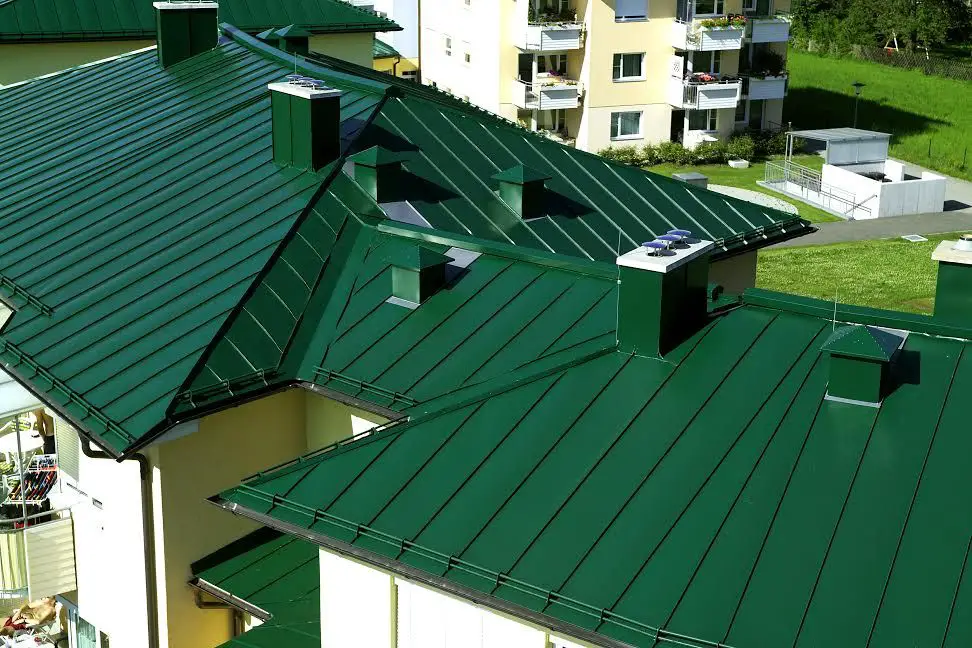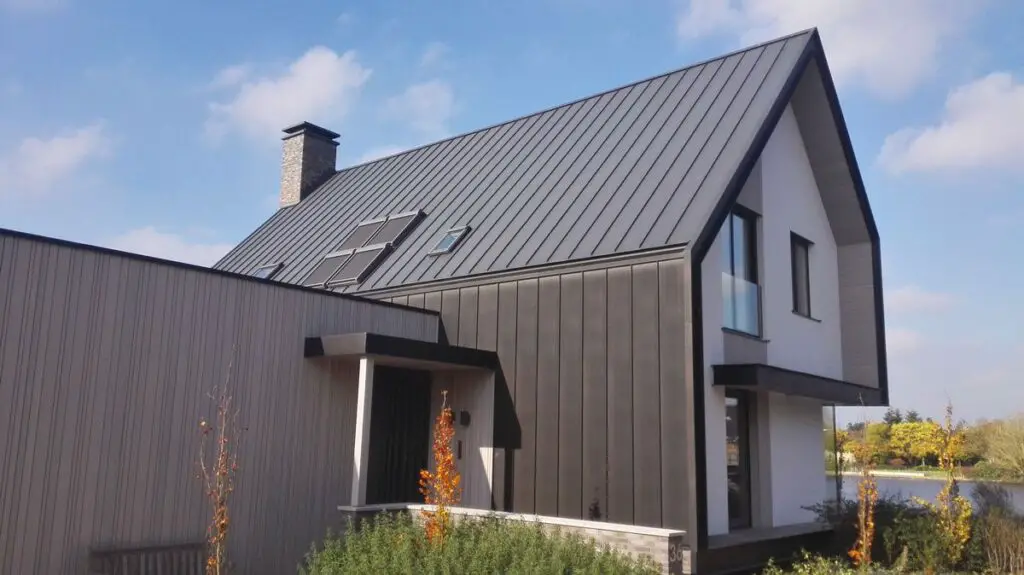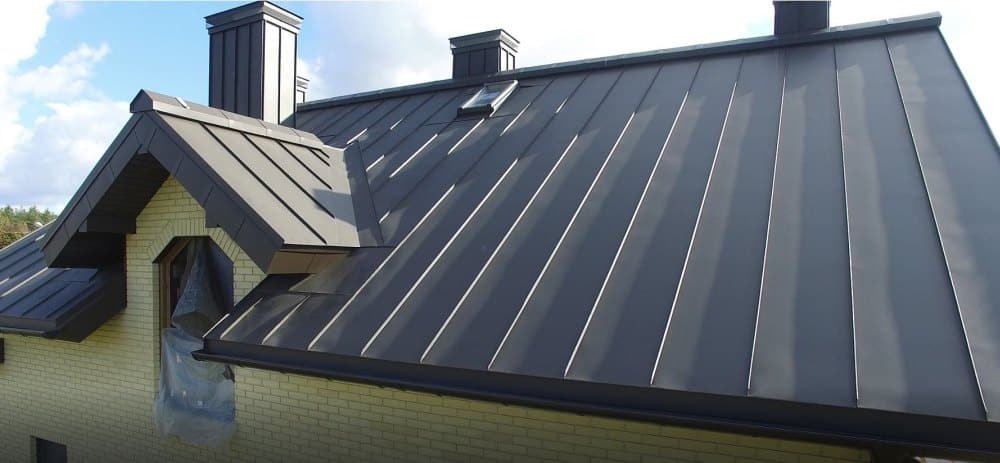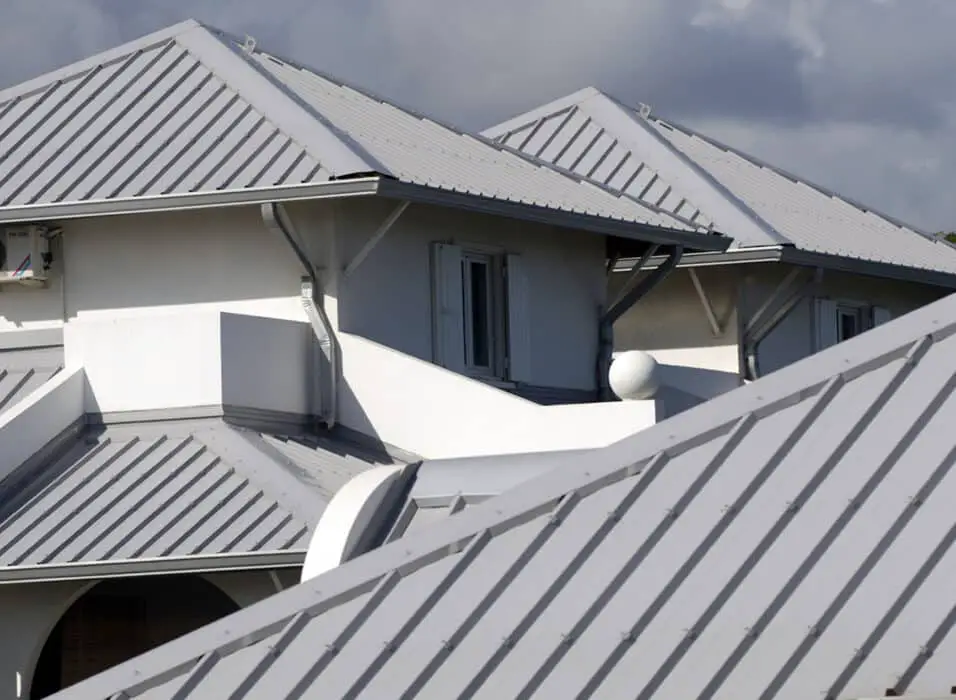How To Patch A Metal Roof
Introduction
How To Patch A Metal Roof: Metal roofs are a popular choice for homeowners due to their durability and longevity. However, over time, even the sturdiest metal roofs may develop leaks or other issues that require patching. In this article, we will provide step-by-step instructions on how to patch a metal roof effectively.
Before we delve into the patching process, it is important to understand the common causes of damage to metal roofs. Additionally, improper installation or poor maintenance can also contribute to roof damage. Identifying the cause of the damage is crucial as it will help determine the appropriate patching method.
When it comes to patching a metal roof, there are several materials and techniques that can be used. This method is suitable for small to medium-sized holes or leaks. For larger areas of damage, a more extensive patching process may be required, involving the replacement of entire metal panels.
Before starting the patching process, it is essential to ensure your safety. Make sure to wear appropriate protective gear, such as gloves and safety goggles, to prevent any injuries. Additionally, it is crucial to work on a dry day to ensure the effectiveness of the patching materials. Now, let’s move on to the step-by-step instructions on how to patch a metal roof.
Begin by cleaning the damaged area of the roof using a wire brush or sandpaper. This will remove any rust, dirt, or loose paint, allowing the patching materials to adhere properly. It is important to clean a slightly larger area than the actual damage to ensure a secure bond.
Once the area is clean, apply a layer of roofing cement over the damaged section. This will act as a sealant and provide a base for the metal patch. Spread the cement evenly using a putty knife or a trowel.
Cut a piece of metal flashing from the patch kit that is slightly larger than the damaged area. Place the flashing over the cemented section, ensuring it covers the entire damaged area. Secure the flashing in place using screws or nails, depending on the type of metal roof you have.
Finally, apply another layer of roofing cement over the edges of the flashing to create a watertight seal. Smooth out the cement using a putty knife or a trowel to ensure a neat finish. Allow the patch to dry completely before inspecting for any remaining leaks or damage.
By following these step-by-step instructions, homeowners can effectively patch their metal roofs and extend their lifespan. Regular maintenance and prompt patching of any damage will help ensure the longevity and performance of your metal roof.”

Can you patch a hole in a metal roof?
Identifying the hole:
The first step in patching a hole in a metal roof is to identify its location and size. Look for any signs of water stains or sunlight coming through, as these indicate the presence of a hole. Once the hole is located, measure its dimensions to determine the appropriate size of the patch needed.
Gathering the necessary materials:
Before starting the repair process, it is essential to gather all the necessary materials. It is also advisable to wear protective gloves and safety goggles during the repair process.
Preparing the area:
Start by cleaning the surface around the hole using a wire brush to remove any rust, dirt, or loose debris. This will ensure proper adhesion of the patch material. After cleaning, apply a layer of roofing cement or sealant around the hole, extending it slightly beyond the hole’s edges. This will create a watertight seal and help secure the patch in place.
Applying the patch:
With the area prepared, it is time to apply the patch. Place the patch material over the hole, ensuring that it covers the entire damaged area. Press it firmly onto the roofing cement or sealant, smoothing out any wrinkles or air bubbles. Allow the patch to dry and cure according to the manufacturer’s instructions before inspecting the repair and ensuring its effectiveness.
What is the best material to patch a metal roof?
Silicone— Silicone sealants are frequently recommended for metal roofs. They offer good protection against moisture and UV rays, so they work well in any weather condition. But with being the best product comes a higher price tag. Rubber— This liquid rubber comes in a thin, water-based formula that’s easy to apply.
Types of Patching Materials:
Metal Roof Sealant: One of the most common and effective materials for patching metal roofs is a metal roof sealant.
Roofing Cement: Another popular option for patching metal roofs is roofing cement. Roofing cement is particularly effective for patching larger holes or areas of damage. It forms a strong bond with the metal surface and provides excellent protection against water infiltration.
Advantages and Disadvantages:
Metal roof sealants offer several advantages. Firstly, they are easy to apply and require minimal tools or equipment. It is also relatively affordable and widely available.
When it comes to patching a metal roof, selecting the right material is essential for a successful repair. Metal roof sealants and roofing cement are two popular options, each with their own advantages and disadvantages. Ultimately, the choice of material will depend on the specific needs of the roof and the extent of the damage.
What can I use to patch my roof?
Spread roofing cement under the split and cover the split with a patch of roll roofing. Split damaged wood shakes with a hammer and chisel. Cut a new shake to fit into the gap and secure it in place with 2 galvanized nails. Use roof sealant or cement to seal gaps less than 1⁄4 in (0.64 cm) wide.
Types of Roof Patching Materials:
Asphalt Shingles: Asphalt shingles are a popular choice for patching roofs due to their affordability and ease of installation. They are available in various colors and styles, making it easier to match them with your existing roof. Asphalt shingles are suitable for patching small areas of damage, such as missing or cracked shingles.
Roofing cement is compatible with various roofing materials, including asphalt shingles, metal, and concrete tiles.
Factors to Consider:
When choosing the right material to patch your roof, several factors should be taken into consideration. Firstly, the extent of the damage plays a crucial role in determining the appropriate patching method. For minor issues, such as a few missing shingles, asphalt shingles or roofing cement may suffice. However, for more extensive damage, it is advisable to consult a professional roofer to assess the situation and recommend the best course of action.
Patching a roof requires careful consideration of the damage extent, roofing material, and suitable patching materials. Whether you opt for asphalt shingles, roofing cement, or roofing tape, it is essential to follow proper installation techniques to ensure a successful repair.
What is the fastest way to patch a roof?
Fastest Way to Seal a Roof Leak
The most commonly-used fix for roof leaks involves thoroughly applying roofing cement or silicone caulk. Whether you’re repairing a small leak on a shingle roof or repairing flashing around a skylight or vent boot, you’ll be able to conduct this repair with a caulk gun.
Introduction:
When it comes to patching a roof, speed is of the essence. Whether you are dealing with a minor leak or a major repair, finding the fastest way to patch your roof can save you time, money, and further damage to your property. In this article, we will explore several effective methods that can help you quickly and efficiently patch your roof, ensuring its durability and longevity.
Identifying the problem:
Before you can begin patching your roof, it is crucial to identify the problem area. This may involve inspecting your roof for signs of damage, such as missing shingles, cracked tiles, or leaks. Once you have pinpointed the issue, you can determine the best approach to patching it.
Temporary fixes:
In some cases, you may need to apply a temporary fix to your roof to prevent further damage while you arrange for a more permanent solution. One common temporary fix is using roofing cement or sealant to seal small cracks or leaks.
Replacing damaged shingles or tiles:
If your roof has missing or damaged shingles or tiles, replacing them is essential for a long-lasting patch. Start by removing the damaged shingle or tile carefully, ensuring you do not cause any additional harm to the surrounding area. Then, install a new shingle or tile using roofing nails or adhesive, depending on the material. This method requires precision and attention to detail, but it can significantly improve the integrity of your roof.
Using roof patches or tape:
For smaller holes or punctures in your roof, using roof patches or tape can be a quick and effective solution. These patches are typically made of durable materials, such as rubber or asphalt, and can be applied directly over the damaged area. Roof patches and tapes provide a temporary fix that can withstand various weather conditions until a more permanent repair can be made.
Consulting a professional:
While there are several DIY methods for patching a roof, it is important to recognize when a professional’s expertise is necessary. If you are dealing with extensive damage, structural issues, or if you are unsure about the best approach, consulting a professional roofing contractor is highly recommended. They have the knowledge, experience, and tools to efficiently patch your roof and ensure its long-term stability.
When it comes to patching a roof, it is crucial to act swiftly and effectively. By identifying the problem, applying temporary fixes if necessary, replacing damaged shingles or tiles, using roof patches or tape, and consulting a professional when needed, you can ensure a fast and reliable solution to your roofing issues. Remember, a well-patched roof not only protects your property but also provides peace of mind knowing that your home is secure from the elements.
Can you patch a hole in a roof?
Rest assured that you can always contact a professional roofing company to repair holes, cracks, or damaged shingles on your residential roof. But, if you’re up for the challenge, you can perform certain roof repairs, like replacing or patching shingles DIY.
Introduction:
When it comes to maintaining the structural integrity of a building, one of the most important tasks is to ensure that the roof remains in good condition. However, over time, roofs can develop various issues, including holes. These holes can be caused by a variety of factors, such as weather damage, aging materials, or even accidents. Regardless of the cause, it is crucial to address these holes promptly to prevent further damage to the roof and the interior of the building.
Identifying the Problem:
Before attempting to patch a hole in a roof, it is essential to first identify the extent of the damage. This can be done by conducting a thorough inspection of the roof. Look for any visible signs of holes, such as sunlight shining through, water stains on the ceiling, or dampness in the attic. It is also important to check for any underlying issues that may have caused the hole, such as loose or missing shingles, damaged flashing, or deteriorated sealant.
Gathering the Necessary Tools and Materials:
Once the problem has been identified, the next step is to gather the necessary tools and materials for the patching process. Some of the essential tools include a ladder, safety harness, hammer, nails, roofing cement, roofing nails, a putty knife, and a patching material such as a shingle or a piece of metal. It is crucial to ensure that all the tools and materials are of high quality to ensure a durable and long-lasting repair.
Preparing the Roof Surface:
Before applying the patch, it is important to prepare the roof surface properly. This involves cleaning the area around the hole to remove any debris, dirt, or loose materials. It is also necessary to remove any damaged or loose shingles, flashing, or sealant. Once the area is clean and free from any obstructions, it is advisable to apply a layer of roofing cement to create a strong and secure base for the patch.
Applying the Patch:
After preparing the roof surface, it is time to apply the patch. Depending on the size and location of the hole, different techniques may be used. For smaller holes, a patching material such as a shingle or a piece of metal can be secured in place using roofing cement and nails. For larger holes, it may be necessary to cut out a section of the damaged roof and replace it with a new piece of roofing material. It is important to ensure that the patch is securely fastened and sealed to prevent any further leaks or damage.
By following these steps and taking the necessary precautions, it is possible to successfully patch a hole in a roof. However, it is important to note that roof repairs can be dangerous and should only be attempted by individuals with the necessary skills and experience. If in doubt, it is always best to consult a professional roofing contractor to ensure a safe and effective repair.
When it comes to patching a metal roof, there are several important steps to follow in order to ensure a successful repair. The first step is to thoroughly clean the area that needs to be patched. This involves removing any debris, dirt, or rust that may be present on the surface of the roof. It is important to use a wire brush or sandpaper to gently scrub away any loose material, ensuring that the patch will adhere properly.
Once the area is clean, the next step is to apply a primer to the patch area. This primer helps to create a strong bond between the patch and the roof surface. This will help to ensure that the patch is strong and durable, providing long-lasting protection for your metal roof.
What materials are needed to successfully patch a metal roof?
When it comes to successfully patching a metal roof, having the right materials is crucial. Here are some essential materials that you will need:
Patching Material: The type of patching material you choose will depend on the extent of the damage and the type of metal roof you have. Common options include metal patches, roofing cement, or specialized metal roof repair kits. It is important to select a patching material that is compatible with your roof’s metal type to ensure proper adhesion and longevity of the repair.
Cleaning Supplies: Before applying any patching material, it is essential to thoroughly clean the damaged area. This will help remove any dirt, debris, or rust that could interfere with the adhesion of the patch. Cleaning supplies may include a wire brush, a mild detergent, and water. Make sure to rinse the area well and allow it to dry completely before proceeding with the patching process.
Safety Equipment: Safety should always be a top priority when working on a metal roof. Make sure to have the necessary safety equipment, such as gloves, safety goggles, and a sturdy ladder. Additionally, if you are working on a steep or high roof, consider using a safety harness or having a professional assist you.
By having the right materials, cleaning supplies, and safety equipment, you can ensure a successful patching process for your metal roof. Remember to follow the manufacturer’s instructions for the patching material you choose and take necessary precautions to protect yourself and your roof during the repair.
Are there any specific tools or equipment required for patching a metal roof?
When it comes to patching a metal roof, there are several specific tools and equipment that are essential for a successful repair. These tools not only ensure the effectiveness of the patch but also contribute to the safety of the individual performing the task.
Safety Gear: Before starting any repair work, it is crucial to prioritize safety. This includes wearing appropriate safety gear such as gloves, safety glasses, and a hard hat to protect against any potential hazards.
Ladder: A sturdy ladder is necessary to access the roof safely. Ensure that the ladder is in good condition and properly secured before climbing up.
Roofing Nails and Screws: These are essential for securing the patch in place. Make sure to use nails and screws specifically designed for metal roofs to ensure a secure and long-lasting repair.
Roofing Cement or Sealant: It helps to prevent any water leakage and ensures the longevity of the repair.
Metal Patch Material: The patch material itself is crucial for a successful repair.
By using the appropriate tools and equipment, you can effectively patch a metal roof and ensure its durability and longevity. Remember to always prioritize safety and follow proper procedures to achieve the best results.
Are there any safety precautions that should be taken while patching a metal roof?
When it comes to patching a metal roof, it is crucial to prioritize safety to prevent any accidents or injuries.
Use proper safety gear: This includes wearing a hard hat, safety goggles, gloves, and non-slip footwear. These items will protect you from potential hazards such as falling debris, sharp edges, and slippery surfaces.
Secure the work area: Before climbing onto the roof, make sure the area is clear of any obstacles or tripping hazards. Remove any loose debris or tools that could cause accidents. Additionally, use caution tape or barricades to prevent unauthorized access to the work area, especially if there are people below who could be at risk from falling objects.
Use proper ladder safety: If you need to use a ladder to access the metal roof, ensure that it is in good condition and placed on a stable surface. Set the ladder at the correct angle, with the base secured and the top resting against a sturdy part of the roof. Always maintain three points of contact while climbing the ladder and avoid overreaching or leaning too far to either side.
Be cautious of electrical hazards: Metal roofs can conduct electricity, so it is essential to be aware of any nearby power lines or electrical equipment. Before starting work, identify the location of electrical sources and take necessary precautions to avoid contact. If needed, consult a professional electrician to ensure proper safety measures are in place.
Be mindful of weather conditions: Weather conditions can greatly impact the safety of working on a metal roof. Slippery surfaces can increase the risk of falls, while strong winds can make it difficult to maintain balance. Always check the weather forecast and plan your work accordingly.
By following these safety precautions, you can minimize the risks associated with patching a metal roof and ensure a safe working environment for yourself and others involved in the project.
Are there any common mistakes to avoid when patching a metal roof?
One of the most important things to remember is to thoroughly clean and prepare the area before applying any patches. Failure to do so can result in poor adhesion and a less effective repair. It is crucial to remove any dirt, debris, or rust from the surface using a wire brush or sandpaper, and then clean it with a mild detergent and water solution.
Another common mistake is using the wrong type of patching material. Using incompatible materials can lead to corrosion, leaks, and further damage. Additionally, it is important to properly measure and cut the patch to ensure a precise fit. Cutting corners or using patches that are too small can result in gaps or weak spots that may compromise the integrity of the repair.
Improper sealing is another mistake to avoid. Failing to do so can allow water to seep in, leading to leaks and potential structural damage. Additionally, it is important to follow the manufacturer’s instructions for the patching material and any adhesives or sealants used. Deviating from the recommended application methods can result in an ineffective repair.

Conclusion
Overall, patching a metal roof can be a challenging task, but with the right instructions and materials, it is definitely achievable. By following the steps outlined in this guide, you can effectively repair any damages or leaks on your metal roof and ensure its longevity and durability. Remember to prioritize safety throughout the process and seek professional help if needed.
First and foremost, it is crucial to thoroughly inspect your metal roof before attempting any repairs. This will help you identify the specific areas that require patching and determine the extent of the damage. Look for signs of rust, corrosion, loose screws, or any other visible issues that may compromise the integrity of your roof. By addressing these problems early on, you can prevent further damage and save yourself from costly repairs in the future.
Once you have identified the areas that need patching, gather all the necessary materials and tools. This may include metal patches, roofing cement, screws holes, a drill, a ladder, safety equipment, and a wire brush.
When it comes to the actual patching process, it is essential to clean and prepare the damaged area before applying any patches or sealants. Use a wire brush to remove any rust or debris, and make sure the surface is dry and free from any moisture. Apply a layer of roofing cement to the damaged area and carefully place the metal patch over it, ensuring a tight and secure fit.
In conclusion, patching a metal roof requires careful planning, preparation, and execution. By following the instructions provided in this guide, you can effectively repair any damages or leaks on your metal roof and ensure its longevity and durability. Remember to prioritize safety throughout the process and seek professional help if needed. With the right materials and tools, as well as proper maintenance, your metal roof can continue to protect your home for years to come.








